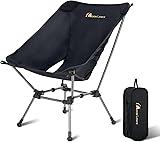The Power of a Line: Why We Crave What Others are Waiting For
Lines hold surprising power over us. They have the power to excite us, incite us, frustrate us, drive us to anger, or make us feel part of something. Just seeing a line forming somewhere can make us want to be a part of what others are waiting for. So, why do we want to join a line just because it’s there? Read on to see why there often is a pot of gold at the end of that line.
- Why we love a good line (even when we don't know what it's for)
- The perceived value of a line
- The psychology behind the craving
- No one wants to miss what's new
- The lingering power of a line
- My own social experiment
- Running for the line
- Lines as social connection
- Lines can mean exclusivity
- The Line as a symbol
- The cultural capital of a line
- What's the message here
- The psychology of commitment and endowment
- When the Line doesn't work
- The wisdom of selectivity
- Sometimes a Line is just a Line
As an Amazon Associate, we may earn a small commission from qualified purchases.
Why we love a good line (even when we don’t know what it’s for)
You’re strolling through a city street on a bright morning. You have coffee in hand, your to-do list is buzzing in your head. Then you see it: a line. A real one. People curving around the block, sunglasses on, phones in hand, some chatting, some just… waiting. You glance at the building. A bakery? A new brunch spot? Maybe a pop-up sample sale. You have no idea.
And yet, you feel it. That curious tug. What’s everyone waiting for? Should you be waiting too? you ever been walking through a city, like New York, maybe Chicago, maybe just your local downtown, and noticed a line snaking around a corner? You probably slowed down, maybe craned your neck to see what everyone was waiting for. If the line was long enough and the people looked excited, chances are you considered getting in it yourself. Even if you had no idea what was at the end of it.

The perceived value of a line
In cities like New York, where stimulation overload is constant and time is tight, people often use lines as shortcuts. They act as social signals: Numerous studies have shown that people would choose a restaurant or café with a visible line over one that was empty, even when told both served the same food.
Of course, a New Yorker would say he’s standing “on line.” Not “in line.” But that’s another post.
The psychology behind the craving
Studies have shown that people are significantly more likely to try something if they see others doing it. It’s wired into us.
At the heart of the matter is something psychologists call social proof, a phenomenon where we look to others to determine appropriate behavior, especially in unfamiliar or ambiguous situations.
We are biologically wired for it. In the early days of human evolution, staying with the group meant survival. If everyone ran, you ran. If everyone gathered berries from a certain bush, you followed suit. That instinct hasn’t left us.
No one wants to miss what’s new
Today, if a new ramen place opens and you walk by and see no one inside, you might assume it’s not good, even if it’s excellent. But see 30 people waiting, and your brain says, “This must be worth it.”
It’s part of why new bakeries or ice cream shops sometimes plant a line on opening day. Yes, really. There’s even a business in Japan where you can hire people to stand in line for you, not just to save you time, but to create the illusion of demand.
The lingering power of a line
You might think by now, with our wisdom, experience, and maybe a touch of skepticism, that we’d be immune. We’re not. A line taps into our sense of curiosity, community, and that lingering feeling that maybe we’re about to miss something wonderful.
In our completely digital world, the physical presence of a line triggers nostalgia. It reminds us of big summer sales, waiting for concert tickets at the record store, or getting into a popular restaurant before everyone had an app.
We’ve been around long enough to know that some of the best moments in life come from saying yes to the unexpected: a boutique we stumbled on, a local fair we never planned to visit, a bakery with a line out the door where we discovered the world’s best croissant.
This is a really great book on teaching us to cultivate curiosity in everyday life. You’ll be surprised what you learn. The Art of Noticing by Rob Walker, taught me to optimize the quiet moments, the standing in line moments, to power mind expansion and creativity. It’s a great read.
My own social experiment
I had an opportunity, recently, to see the power of a line, up-close. A friend had alerted me to The Fruit Truck, a semi that comes north from Georgia on a well-planned schedule, delivering just-picked Georgia peaches, blueberries, blackberries, strawberries, honey, pecans, and the list goes on.

I was intrigued and signed-up to purchase a crate of Georgia peaches from a stop near me.
I arrived about 15 minutes early and pulled into a parking spot at the designated location, a large-box sporting goods store. The lot was already swarming with people and cars.
Running for the line
I didn’t immediately see the semi, but I did see people walking at a fast clip, toward the other side of the parking lot. I joined the crowd making its way to the line. Pretty soon, some of the people began jogging toward the line. I quickened my pace, but felt kind of silly running toward a peach truck.
By the time I reached the end of the line, it had already folded back on itself, so as not to block the entrance to the sporting goods store.
It seemed like the longer the line got, the faster people were walking and running toward it. Someone was directing people when it was time to create a new fold in the line. My position happened to be right near the entrance to the sporting goods store, which gave me a unique vantage point.
No products found.
Lines as social connection
We probably all realize a long line signals scarcity. And scarcity heightens desire, whether it’s a limited-time cupcake flavor, a flash sale, or exclusive club access. We’re drawn to the idea that something fleeting is happening, and we’d better get in on it before it’s gone.
Lines can mean exclusivity
No one entering the sporting goods store seemed to have any idea what the line was for. But the excitement was such that many of them (without even asking us why we were standing in line), decided to join it.
“Must be something good,” one man said.
“Maybe it’s some new sneaker release,” a teenage young man said.

I was hoping to be near the teenagers when they realized it wasn’t a sneaker release, but a truck full of peaches.
The Line as a symbol
I started thinking of all the lines I’d stood in throughout time. Restaurants, nightclubs, even pop-up stores. Never a fruit truck. But I will say, the people in this line were very serious about their fruit. I learned how long people had been frequenting The Fruit Truck, how great their produce was, and how upsetting it was when there were pricing hikes.
This crowd fully believed in the value of standing in a parking lot on a hot summer day. Some talked about sharing their peaches, others said, “If people want the fruit, they can stand in the line!”

I felt the buzz, even the sense of scarcity. And who doesn’t like buzz.
I wasn’t really sure how I’d gain any status by letting anyone I’d been in this line. But clearly, there were others for whom this was a claim to fame. Let’s be honest: everyone likes buzz. Whether it’s a new peony variety at the garden center, or a pop-up event selling handmade soaps, a line tells us something’s happening, and we want in.
The cultural capital of a line
In cities like New York, Tokyo, London, or San Francisco, lines don’t just signal value—they signal cultural capital.
Knowing about the right food truck, club, exhibit, or drop before it goes viral gives you a sense of insider status. Waiting in line isn’t a burden. It’s a badge. A story you’ll later tell your friends. An Instagram post with #worthit.
It’s not always about the product. It’s about what being in the know represents.
Sometimes the line isn’t about the cronut at all. It’s about the kind of woman who gets up early, navigates the city solo, and tries something new. Let’s be honest. That’s not a bad thing. New experiences, being on the lookout for ways to broaden our experience, all of this keeps us in the stream of life.
What’s the message here
There’s no question that standing in a line builds community. Young and old, casual peach-lovers, zealot peach-lovers, we’re all one standing in this line.
It had been a while since I’d stood in line for anything. But even as it began to lightly rain, I was glad to be in this line. I did start thinking about sharing my bounty, as well as the baked goods I could make. I even got to thinking about freezing some peaches for the long winter.
I was honestly glad not to be missing this moment.
The psychology of commitment and endowment
But this isn’t always the case. Ever waited in line so long that leaving felt impossible, even if the reward no longer seemed worth it?
That’s called the sunk cost fallacy. Once we’ve invested time or energy into something, we feel compelled to stick with it. But it also plays into the endowment effect. Once we commit to something, even the idea of a product or experience, it becomes more valuable to us.
The longer we stand in line, the more we justify the worth of what we’re waiting for. That’s why the reward often feels sweeter. We earned it.
When the Line doesn’t work
Does a line always mean exclusivity and value? Nope.
A line can also signal chaos, not value. Long lines at the DMV or the airport don’t generate curiosity or allure. They trigger dread.
What’s the difference?
Two things:
- Voluntary participation. We’re more likely to view lines positively when we choose to be there.
- Perceived reward. If the payoff is pleasure, indulgence, or experience, the line feels meaningful. If it’s obligation or bureaucracy, we resent it.
The wisdom of selectivity
The teenagers who joined the line in the hopes there was a new sneaker release probably didn’t think much of it when they discovered it was peaches and promptly left the line. But as time goes on, we become more selective, not just about lines, but about everything: how we spend time, energy, money, and attention.
We learn to pause and ask: Is this line worth it for me?
Sometimes, it’s an easy yes. The bakery that reminds you of Paris. The music that moved you in your twenties. The rare book sale.
Other times, the best choice is to walk by and smile. To say, “Not today,” and mean it.
This is agency. This is discernment.
Lines may call to us, but we get to choose which ones to join.
Sometimes a Line is just a Line
Back to the purpose of the line I was standing in that day, snaking through the sporting goods parking lot. Honestly? I began to wonder what I was even going to do with 20 pounds of peaches. Sure, we loved them. They were good for us. I could freeze some. And so on. Still . . .
But the longer I stood in the line, the less likely I was to give up on it. I was living the sunk cost fallacy. Even more so, the longer I stood in that line, the more convinced I became that this afternoon wasn’t even about the peaches. It got me thinking about the story I’d be able to tell, and the chance to observe a particular type of human behavior.
I chatted with some nice people. It might not have been a hot nightclub, but I probably wouldn’t have made the cut, anyway. It was just peaches, but it felt right.
And having a large crate of Georgia Peaches meant we would have Peach Cobbler in our future. A worthy expenditure of time and community on a drizzly Saturday afternoon.
Ingredients
- 9 fresh Georgia peaches, or any fresh peaches
- 1/4 cup sugar
- 1/4 cup brown sugar
- 1/4 tsp cinnamon
- 2 tsp fresh lemon juice
- 2 tsp cornstarch
- 1 cup flour
- 1/4 cup sugar
- 1/4 cup brown sugar
- 1 tsp baking powder
- 1/2 tsp salt
- 6 Tbsp cold, unsalted butter, cut into small pieces
- 1/4 cup boiling water
- 3 Tbsp sugar
Instructions
- Preheat the oven to 425°. Combine peaches, 1/4 cup sugar sugar, 1/4 cup brown sugar, cinnamon, lemon juice and cornstarch in a bowl. Toss gently to coat peaches. Pour all into a 2-quart baking dish. Bake for 10 minutes in preheated oven.
- While peaches are baking, combine flour, 1/4 cup sugar, 1/4 cup brown sugar, baking powder, and salt in a large bowl. Blend in butter bits with a pastry blender, or your fingers, until mixtures resembles coarse crumbs. Stir in boiling water, just until combined.
- Remove peaches from oven. Drop spoonfuls of batter over them. Dollops, rather than a uniform coating is best. (Otherwise, steam can't escape and topping is soggy).
- Sprinkle 3 Tbsp sugar over top of batter and peaches. Bake about 30 minutes or until bubbling and lightly browned.
Last update on 2025-11-25 / Affiliate links / Images from Amazon Product Advertising API


